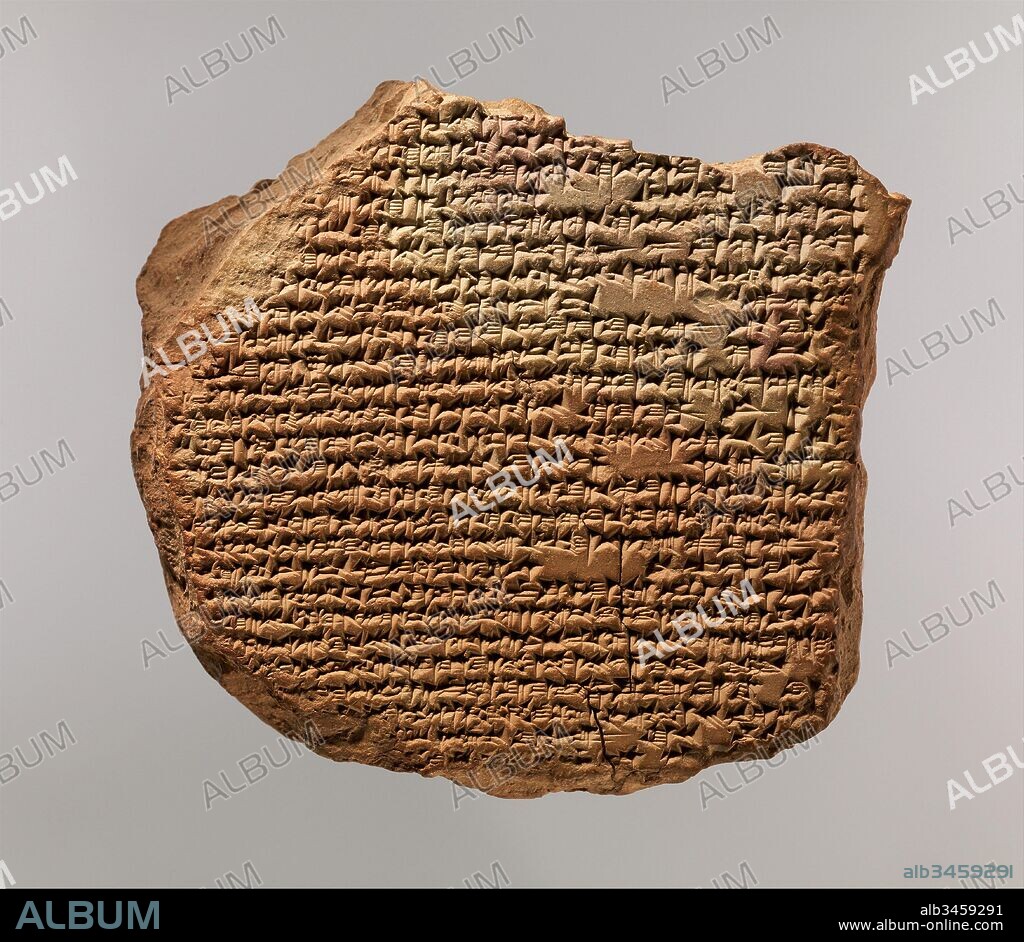alb3459291
Cuneiform tablet: hymn to Marduk, Neo-Babylonian (?), 1st millennium B.C., Mesopotamia, Babylonian (?), Clay, 3 1/2 x 3 7/8 x 1 1/8 in. (9 x 9.8 x 2.9 cm), Clay-Tablets-Inscribed, The god Marduk first became an important god in the early second millennium B.C., when Babylon (under its most famous king, Hammurabi) became the capital city of a large Babylonian state. Marduk’s importance in the pantheon of gods rose with the fame of the city of Babylon, so that in later periods he was the supreme deity.

|
Zu einem anderen Lightbox hinzufügen |
|
Zu einem anderen Lightbox hinzufügen |



Haben Sie bereits ein Konto? Anmelden
Sie haben kein Konto? Registrieren
Dieses Bild kaufen

Untertitel:
Siehe automatische Übersetzung
Cuneiform tablet: hymn to Marduk, Neo-Babylonian (?), 1st millennium B.C., Mesopotamia, Babylonian (?), Clay, 3 1/2 x 3 7/8 x 1 1/8 in. (9 x 9.8 x 2.9 cm), Clay-Tablets-Inscribed, The god Marduk first became an important god in the early second millennium B.C., when Babylon (under its most famous king, Hammurabi) became the capital city of a large Babylonian state. Marduk’s importance in the pantheon of gods rose with the fame of the city of Babylon, so that in later periods he was the supreme deity
Persönlichkeiten:
Bildnachweis:
Album / quintlox
Freigaben (Releases):
Model: Nein - Eigentum: Nein
Rechtefragen?
Rechtefragen?
Bildgröße:
4684 x 4067 px | 54.5 MB
Druckgröße:
39.7 x 34.4 cm | 15.6 x 13.6 in (300 dpi)
Schlüsselwörter:
ALTER ORIENT: MESOPOTAMIEN • ASSUR • ERSTER, ERSTE, ERSTES • GOETTER • GOTT • MESOPOTAMIEN • NEUBABYLONISCH • RUHM • STADT • STEINGUT • STÄDTE • TON
 Pinterest
Pinterest Twitter
Twitter Facebook
Facebook Link kopieren
Link kopieren Email
Email
